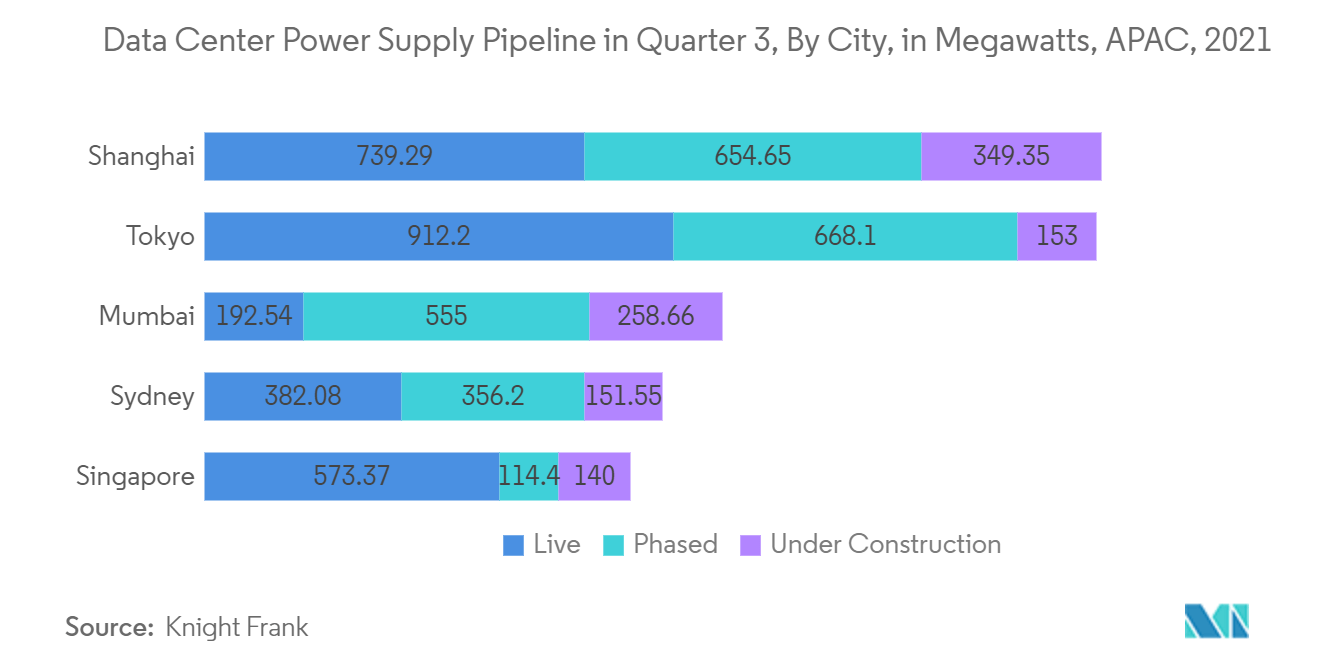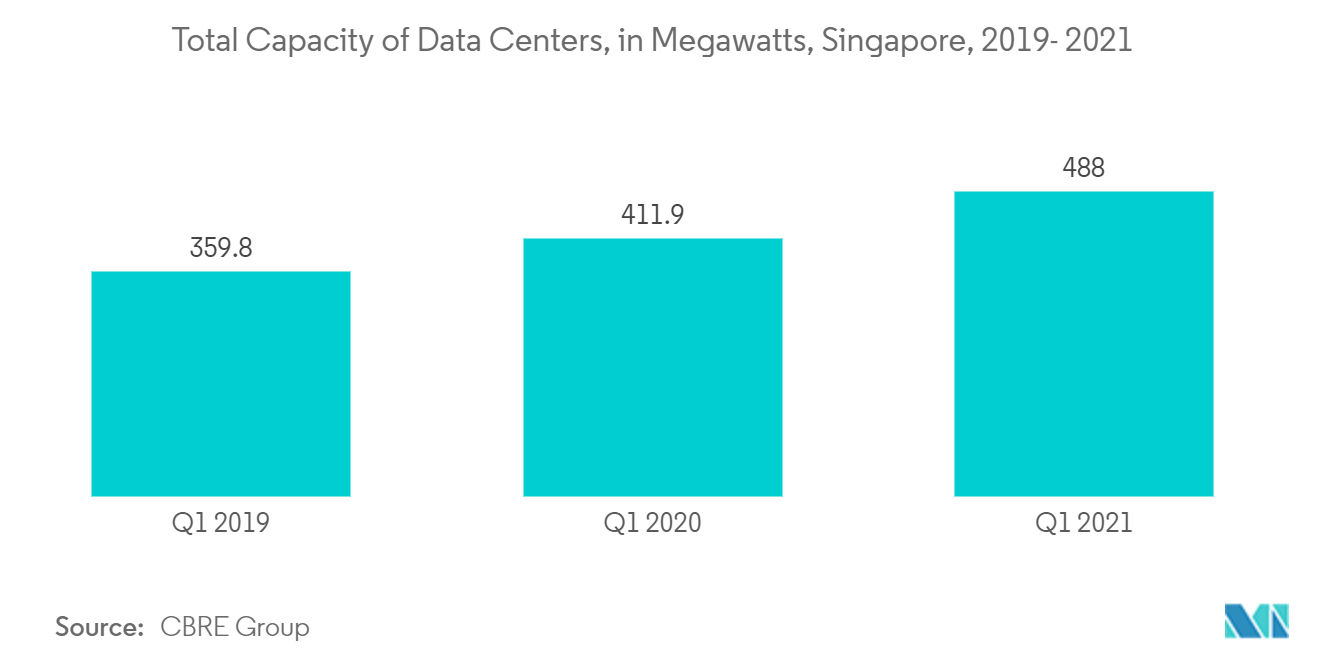Market Trends of APAC Green Data Center Industry
This section covers the major market trends shaping the APAC Green Data Center Market according to our research experts:
Rise in Electricity Prices Affecting the Market Negatively
- Rising energy prices lead to increased business costs and narrow profit margins for companies. Prices of energy commodities - including oil, natural gas, and coal - soared in recent weeks as supply remains tight and demand has increased since a Covid-induced slowdown. This has contributed mainly to power shortages in Asia.
- China has recently allowed the price of coal-fired power to rise sharply in the hope that market forces can address a power crunch that has threatened growth and caused ripple effects worldwide.
- In the Asia Pacific, limited land size, tropical climate, lack of cost-effective renewable energy supply, and shifting policies for data center development are vital challenges impeding the growth of data centers in the region and causing an increase in rental rates. For instance, in July this year, ST Telemedia announced its subsidiary, ST Telemedia Global Data Centres India, has started construction on its greenfield sited data center facility in Noida, India. It added that consistent with their focus on sustainability. The new data center will be a green building and source more than half of its power from renewable energy resources.
- But there are green options, including measures to increase renewable energy supply and use viable cleaner fuel alternatives such as hydrogen for expanding the need for world-class data center facilities in clean energy sources. Furthermore, in February this year, Sify Technologies announced that it has entered into power purchase agreements (PPAs) with Vibrant Energy Holdings for 231 megawatts (MW) of solar and wind energy capacity to invest in over $33 billion for 200 MW of green energy for IT capacity of data centers in Asia Pacific data center market, in the next four years to power data centers with an intense global push towards renewable energy.
- It is incumbent on the government authorities to provide regulatory certainty and set a roadmap for data center development that considers its climate impact. Government support for technological innovations such as hydrogen will help data center developers and operators integrate these sustainable features into the design and siting of their data centers.

Rise in Efficient Liquid Cooling Techniques Aid the Market Growth
- Data centers are increasing rack density to provide more robust client services as workloads grow. From smaller, modular facilities to large, hyperscale data centers, efficiency and performance go hand in hand. With the increased rack space, air cooling will no longer be viable.
- According to Summer, a medium data center server rack uses 3-6 kilowatts per rack or node. However, HPCs with 60 kilowatts per rack or node are now available.Similarly, according to a recent Uptime Institute survey of 422 respondents, racks with densities of 20 kW and higher are becoming a reality for many data centers.
- Such an increase in rack space and capacity creates a need for immersion-based cooling technology that absorbs heat far more efficiently than air due to the dielectric liquid. Regarding shipments, the adoption of racks ranging from 42U to 48U is high amongst some major technology companies such as Google, Microsoft, and Facebook. With cloud computing growth, the need for 42U, 45U, and 48U racks will increase.
Several companies based out of Taiwan are engaging in significant developmental activities in the immersion cooling landscape. For instance, in June 2020, Taiwan-based cooling solution developer Kaori Heat Treatment will kick off a shipment of a liquid immersion cooling system to a Chinese data center.


